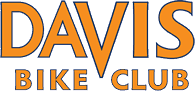Riding a Tandem can Improve Parkinson's Symptoms by 35%
In several promising research studies over the past few years, exercise scientists, in particular Jay Alberts of the Cleveland Clinic’s Department of Biomedical Engineering, have had remarkable, measurable success with an innovative program that pairs people with Parkinson’s with strong cyclists (trainers) on stationary tandem bicycles to increase their mobility, reduce tremor, and minimize rigidity. (See links below.)
 With the trainer in the front and the person with Parkinson's in the rear, the team pedals for one hour — including a ten-minute warm-up, a ten-minute cool-down, and breaks when necessary. The goal is to pace the 40-minute, hard-working section at 30-35% above the subject's voluntary maximum. In other words, if a person with PD could ride a stationary bike at a rate of 60-rpm, the goal for that team would be about 80-rpm. This is known as FE -- Forced Exercise.
With the trainer in the front and the person with Parkinson's in the rear, the team pedals for one hour — including a ten-minute warm-up, a ten-minute cool-down, and breaks when necessary. The goal is to pace the 40-minute, hard-working section at 30-35% above the subject's voluntary maximum. In other words, if a person with PD could ride a stationary bike at a rate of 60-rpm, the goal for that team would be about 80-rpm. This is known as FE -- Forced Exercise.
Overall, the people with PD who completed the eight-week study improved their UPDRS (Unified Parkinson’s Disease Rating Scale) by 35% -- and most maintained those improvements for an additional four weeks.
Madeleine Kenefick has been meeting with Jan Robinson, Finance Manager at the Davis Athletic Club, about starting a Forced Exercise program for local people with Parkinson’s. The DAC has agreed to set aside space at the Club for a stationary tandem bicycle, with volunteers from its regularly scheduled spinning classes serving as lead cyclists, or "trainers."
The eight-week program will be followed by a break of two - four weeks, after which participants may sign up for another eight-week session; the program as a whole may be seen as ongoing.
Scheduling is tied to when the DAC spinning classes meet (unless you will be providing your own lead cyclist.) After choosing a convenient spinning class time from the schedule you'll be given (your trainer will be notified when you arrive), all participants will need to do is reserve the tandem by calling DAC
(530-753-5282) that same day.
Those potential participants who are not yet up to speed are encouraged to use the program to gain the strength needed to achieve the described benefits.
If you are interested in participating in the initial eight-week program, please sign up at the front desk of the Davis Athletic Club (1809 Picasso, Davis) throughout the month of November. Cycling sessions will begin in January. The program is open to DAC members and non-members free of charge.
Madeleine Kenefick (madeleine.kenefick@gmail.com)
http://neurotalk.psychcentral.com/thread22265.html
Exerc Sport Sci Rev. 2011 Oct;39(4):177-86.
It is not about the bike, it is about the pedaling: forced exercise and Parkinson's disease.
Alberts JL, Linder SM, Penko AL, Lowe MJ, Phillips M.
Source
1 Department of Biomedical Engineering,
2 Center for Neurological Restoration,
3 The Imaging Institute, Cleveland Clinic Foundation
4 Cleveland FES Center, L. Stokes Cleveland VA Medical Center, Cleveland, OH.
ABSTRACT
Forced exercise has resulted in neuroprotective effects and improved motor function in animal studies. These promising results have not yet been translated fully to humans with Parkinson's disease (PD), as traditional exercise interventions have not yielded global improvements in function. A novel forced exercise intervention is described that has resulted in improved motor function and central nervous system function in PD patients.
Neurorehabil Neural Repair. 2009 Jul-Aug;23(6):600-8. Epub 2009 Jan 8.
Forced, not voluntary, exercise improves motor function in Parkinson's disease patients.
Ridgel AL, Vitek JL, Alberts JL.
Source
Department of Biomedical Engineering, Cleveland Clinic, Cleveland, OH 44195, USA.
ABSTRACT
Animal studies indicate forced exercise (FE) improves overall motor function in Parkinsonian rodents. Global improvements in motor function following voluntary exercise (VE) are not widely reported in human Parkinson's disease (PD) patients.
OBJECTIVE:
The aim of this study was to compare the effects of VE and FE on PD symptoms, motor function, and bimanual dexterity.
METHODS:
Ten patients with mild to moderate PD were randomly assigned to complete 8 weeks of FE or VE. With the assistance of a trainer, patients in the FE group pedaled at a rate 30% greater than their preferred voluntary rate, whereas patients in the VE group pedaled at their preferred rate. Aerobic intensity for both groups was identical, 60% to 80% of their individualized training heart rate.
RESULTS:
Aerobic fitness improved for both groups. Following FE, Unified Parkinson's Disease Rating Scale (UPDRS) motor scores improved 35%, whereas patients completing VE did not exhibit any improvement. The control and coordination of grasping forces during the performance of a functional bimanual dexterity task improved significantly for patients in the FE group, whereas no changes in motor performance were observed following VE. Improvements in clinical measures of rigidity and bradykinesia and biomechanical measures of bimanual dexterity were maintained 4 weeks after FE cessation.
CONCLUSIONS:
Aerobic fitness can be improved in PD patients following both VE and FE interventions. However, only FE results in significant improvements in motor function and bimanual dexterity. Biomechanical data indicate that FE leads to a shift in motor control strategy, from feedback to a greater reliance on feedforward processes, which suggests FE may be altering central motor control processes.
PMID:
19131578
[PubMed - indexed for MEDLINE]

